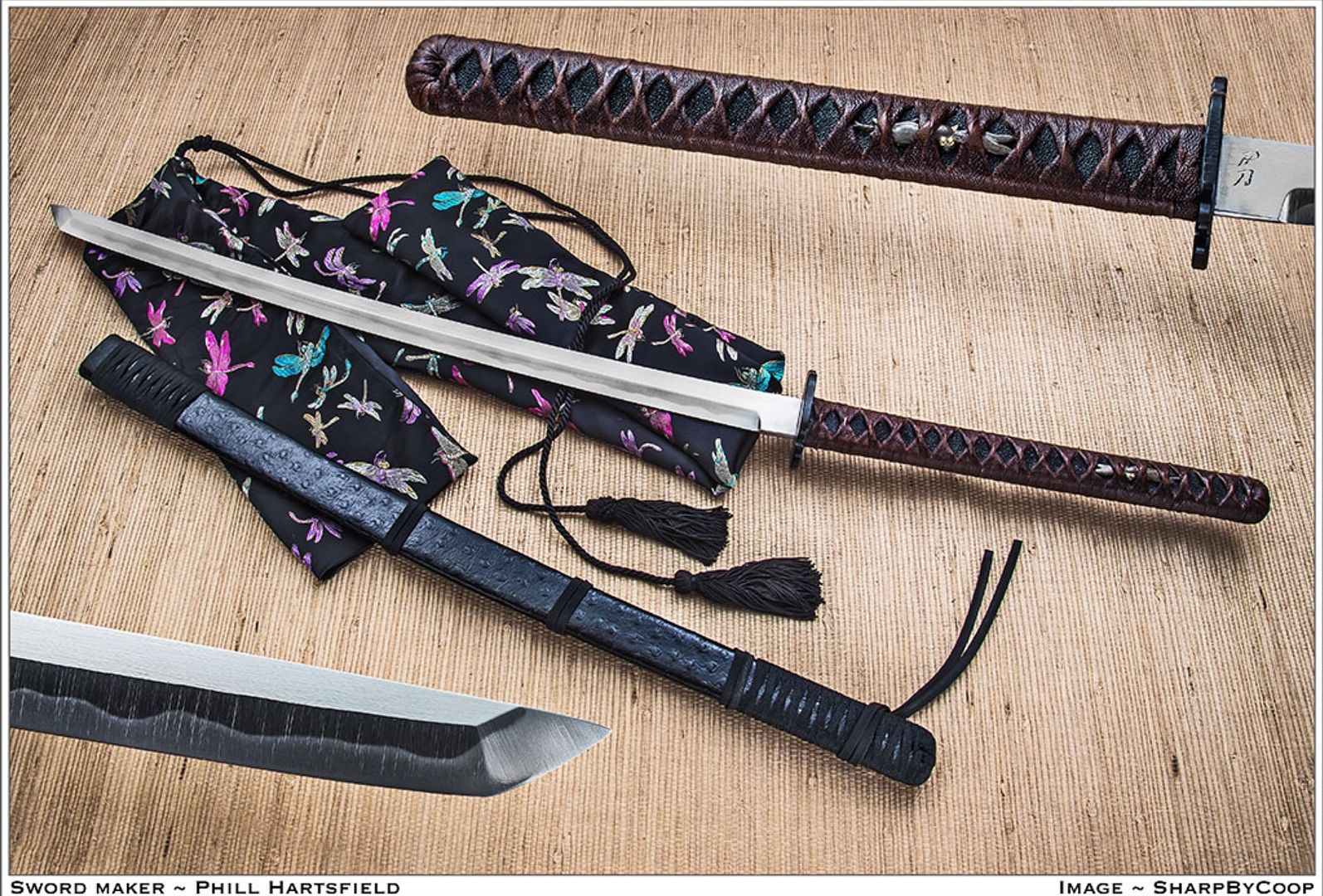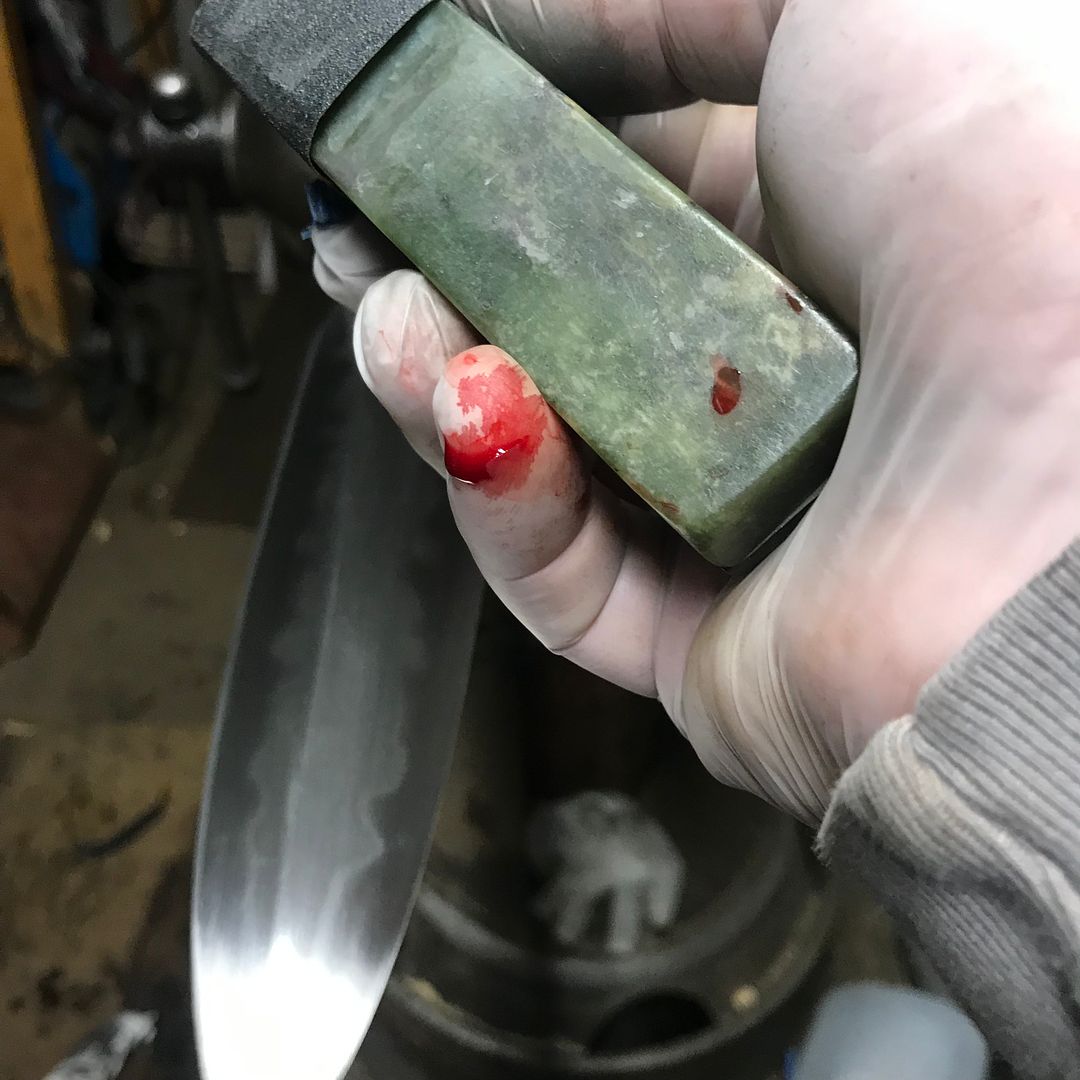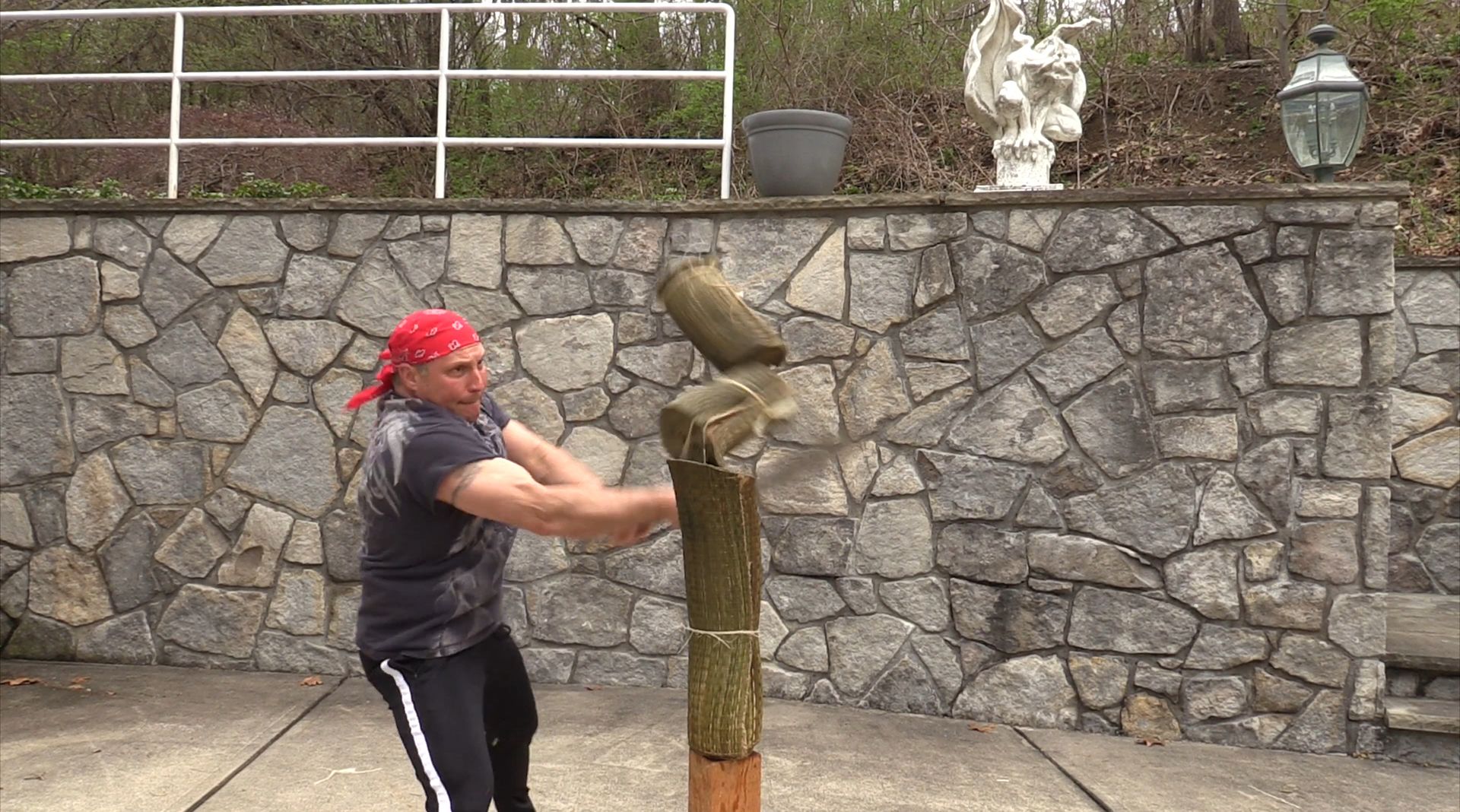I don’t know much about mail ninja goofy folders being evil but
Historically there have been many blades deemed evil
These were mostly swords especially in the Japanese culture that bit their maker
These swords had long history’s of being blood thirsty and would not only cut their maker but their owner than
......
COPIED AND PASTED
Long a staple of fantasy stories, the idea of magical or cursed swords is actually a pervasive one among the history and myths of many cultures throughout the world. One place where such tales have long been entwined with lore and historical accounts is the country of Japan. With its long history of feudal warfare and samurai warriors, the sword, usually referred to as the katana in Japanese, was long more than just a weapon, but rather a sacred, revered object and a way of life. For the samurai who wielded them, their katana were an extension of themselves, and were the result of the painstaking efforts of master swordsmiths who elevated their craft to the point that the Japanese katana became world renowned for superior quality, beauty, and lethality.
Considering this long tradition of supreme quality, reverence, and how intertwined with Japanese culture, history, and legend the katana became, it is perhaps no surprise that Japan also has its tales of mysterious swords said to be cursed, magical, or both. Here among the history of heated sword duels between battling samurai, and swordsmiths toiling away to forge their deadly blades, are accounts of katana that have become just as known for their mysterious alleged powers as they are for their craftsmanship.
Among the greatest and most legendary of Japan’s famed swordsmiths was the one called Muramasa Sengo, who lived and pursued his craft during the Muromachi period (14th-15th century AD). Both Muramasa and his school of sword making were renowned for the extraordinary quality and sharpness of their blades, which made the weapons highly prized and sought after by warriors and generals. Indeed, Muramasa became well regarded as being one of the finest swordsmiths who had ever lived, but he also became notorious for his rather volatile nature and a dark curse that was increasingly believed to imbue his swords.
Many of such rumors began with the abrasive, venomous personality of Muramasa himself. In addition to being obviously a brilliant swordsmith, he was also purported to be rather insane and prone to flying into sudden fits of violent rage, during which he would lash out at anyone unlucky enough to be nearby. This unbalanced mind, which teetered on the brink of total madness, combined with his relentless perfectionism and unbridled passion for crafting lethal swords to congeal into an unstable mix of genius, bloodlust, intense focus, and insanity, and these qualities were said to be passed on to the katana he forged. Adding to this was Muramasa’s alleged habit of feverishly praying to whoever would listen that his swords become “great destroyers,” and his swords gained a rather ominous reputation despite their popularity and high demand.
Numerous dark and sinister qualities were attributed to the supposed curse of Muramasa’s swords. Perhaps the most persistent was that the swords had a tendency to possess their wielders in a sense, sending them into a berserker battle rage and in some versions granting them superior swordsmanship, and bestowing them with temporary superhuman strength and resistance to pain and damage. The cursed Muramasa swords were also said to have a thirst for blood, and that if they weren’t sated by that spilled by the enemy then they would turn on their owners, forcing them to commit suicide to appease them. Indeed, it was often said that as soon as a Muramasa blade was drawn it ruthlessly demanded blood before it could be replaced back into its scabbard, meaning almost certain doom for the wielder if there was no one else around to vent the sword’s bloodlust upon. Even when not drawn the swords were said to sometimes hungrily call out to be released, or to try and compel their owners to go out hunting for some poor soul to murder.
Although undeniably potent weapons formidable in battle, this dark curse allegedly made the swords and their wielders dangerous for everyone around them. Many tales sprung up of Muramasa swords turning on their owners, lashing out to strike down and drink in the blood of anyone within reach, including not only enemies, but allies and even family members, which the wielder could do nothing to stop while held in thrall to the sword’s evil frenzy. Tales describing samurai armed with Muramasa swords lashing out at dear friends, allies, and family as they watched helplessly as their own bodies cut them down were numerous. At their most bloodthirsty and rage-fueled the swords were said to hardly discriminate between friend and foe, and used their owners merely as instruments with which to help them kill. It was not uncommon to hear of the owners of Muramasa swords slowly going insane as they were warped and twisted to their weapons’ demonic will, sometimes killing themselves to escape the dark, madness inspiring prison.
This sinister reputation eventually ended up being further fueled when the Tokugawa Shogunate, which was the last feudal government in Japan, was established in 1603 by the shogun Tokugawa Ieyasu, who firmly believed that Muramasa blades were cursed, and blamed them for the deaths of many of his friends, allies, and relatives. Indeed, apparently the shogun’s father, Matsudaira Hirotada, and his grandfather, Matsudaira Kiyoyasu, were both cut down when their retainers were overcome by a murderous trance while wielding such swords. Tokugawa even claimed that he had been badly cut by a Muramasa katana that was being carried by one of his samurai guards as he inspected his ranks. In later days his own wife and adopted son were allegedly excecuted using a Muramasa blade. All of this stoked rumors that Muramasa swords had it in for the Tokugawa family, and that they had a special affinity for killing members of his clan.
This notion became so prevalent that Ieyasu Tokugawa eventually banned Muramasa katana in his domain. Many of them were subsequently melted down or otherwise destroyed, but since they were so revered for their sheer quality others were hidden or had any distinguishing features altered or removed, even in the face of severe punishment for owning one, typically the forcing of the guilty party to commit ritual suicide, or seppuku. Despite this, Muramasa katana continued their trajectory to legendary status. Considering these katana were thought to be able to seek out and kill the shogun and his family, there was also a renewed demand for the swords among Tokugawa’s enemies, which resulted in some enterprising lesser swordsmiths forging clever fake replicas for profit. In fact, because of the number of such forgeries crafted during this era it is to this day difficult to reliably tell if a purported Muramasa katana is authentic or not.
Often directly contrasted with the cursed, chaotic evil of Muramasa swords were those of another renowned swordsmith and priest who lived several hundred years earlier by the name of Gorō Masamune (1264–1343 AD), who is considered to be perhaps the greatest who has ever lived. Masamune’s reputation couldn’t be any more the polar opposite of Muramasa. Whereas Muramasa was seen as an impulsive, violent, and psychotic madman, Masamune was mostly described as patient, wise, clear-headed, and even-tempered. His creations were famous for not only their supreme sharpness, durability, and quality in an era when steel imperfections were common and the technology primitive, but also their elegant beauty; as much works of art as they were weapons of war.




